Saturn rising, 22nd March 2011

|
Although labs are done this sememster, the telescope is still actively being used. The first part of the preliminary testing was done to assess the telescopes capability of detecting the lightcurve made by transiting exoplanets.
|
Transit of Venus
8th Jun. 2004
|
The Astrophysics Group at the University of Exeter provided a live web feed covering the transit of Venus on the 8th of June 2004. More information about the transit can be obtain from the European Southern Observatory (ESO).
|

8th June 2004
|
Transit of Mercury Across the Sun
7th May 2003
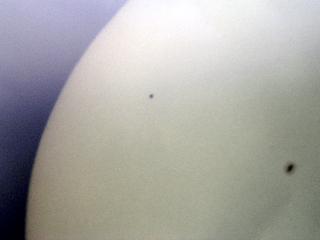
09:00 |
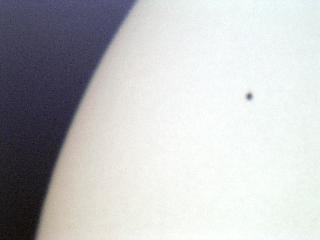
09:01 |
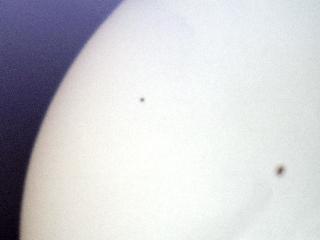
09:02 |
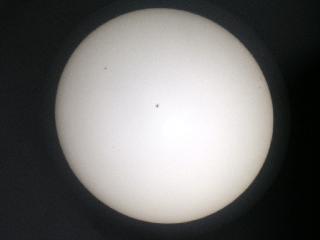
09:26 |
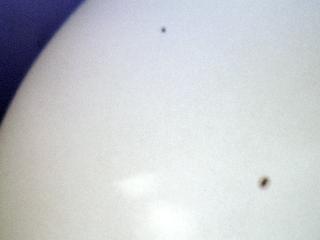
10:03 |
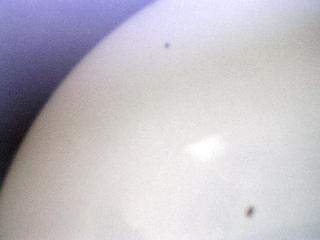
10:40 |
|
Images of the transit of Mercury in front of the Sun. Click on the images for larger versions. Visible are Mercury (upper left region of the solar disc), a large sunspot (lower right in most images, at the centre of the solar disc in the image of the full solar disc), and a group of sunspots (on the right-hand limb in the full solar disc image).
The transit was viewed by students at the University of Exeter
Observatory by projecting the solar image on to a screen and taking photos
with a digital camera. This is a
safe method for observing solar phenomena, since viewing the Sun
directly using the naked eye, or an optical instrument such as
binoculars, may lead to permanent blindness.
Note the motion of Mercury relative to the large sunspot over the 1 hour, 40 minutes spanned by the photos. We did not obtain images of Mercury very near the edge of the solar disc due to cloudy weather.
Transits of the planet Mercury are a relatively rare occurence, with on average thirteen transits per century. Mercury appears as a small black disc that passed across the face of the Sun. The planet, which has a diameter of 5000 kilometres, is dwarfed by the Sun, which is a collosal 1.4 million kilometres across.
|
First Light for Spectrograph
5th Feb 2003

This spectrum of the planetary nebula NGC 2392 was taken
with the low-resolution grating using an autoguided 2min
exposure. The continuum from the central star can clearly be
seen, along with strong emission lines from hydrogen and
oxygen from the nebula. The observers were two 2nd year
undergraduate students.
Inital Work Completed
15th Nov. 2002
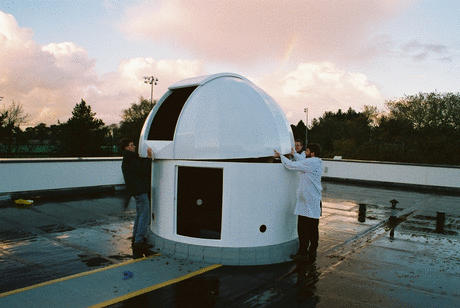
|
|
Final construction work on the observatory dome.
|
The inital work has been completed on the observatory,
and while there is still lots we want to do to further
develop the site we're now ready to observe.
Site Preparation
Summer 2002
The images below show how the site preparation and build
work progressed over the summer of 2002.
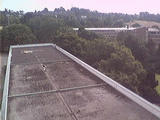
09:08 22nd Aug 2002
|
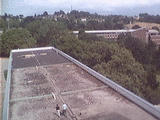
14:39 23rd Aug 2002
|
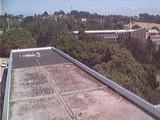
13:56 27th Aug 2002
|
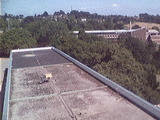
14:09 27th Aug 2002
|
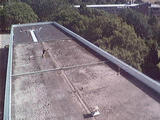
11:02 7th Sep 2002
|
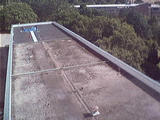
11:32 7th Sep 2002
|
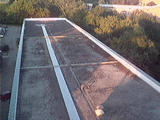
18:21 24th Sep 2002
|
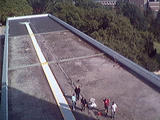
13:40 25th Sep 2002
|
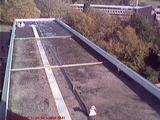
11:51 15th Nov 2002
|
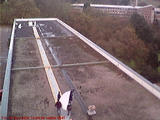
13:04 15th Nov 2002
|
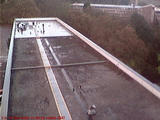
15:34 15th Nov 2002
|
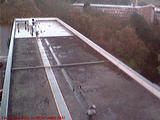
15:38 15th Nov 2002
|
 webmaster@astro.ex.ac.uk
webmaster@astro.ex.ac.uk
Last Modified: Mon 21 Mar 2016